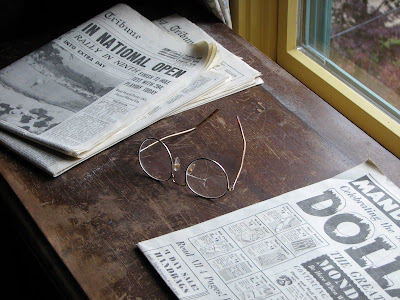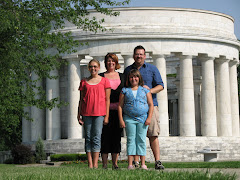 This morning when I requested a one-egg omelet instead of the larger three-egg version of the same, the cook (who, incidentally, also took my order from behind the counter, served me, and was my cashier) suggested that I consider ordering a two-egg omelet, or a scramble, that it would be difficult to wrap all the goodness that is the quality fillings into a single beaten egg, but, he would try. I offered him broad artistic license to interpret my breakfast order as his set of skills would allow.
This morning when I requested a one-egg omelet instead of the larger three-egg version of the same, the cook (who, incidentally, also took my order from behind the counter, served me, and was my cashier) suggested that I consider ordering a two-egg omelet, or a scramble, that it would be difficult to wrap all the goodness that is the quality fillings into a single beaten egg, but, he would try. I offered him broad artistic license to interpret my breakfast order as his set of skills would allow. While engaged in conversation with my fellow companions (each foodies in their own ways), I carefully watched as he cracked a fresh egg into a stainless steel bowl, whipped it, and poured it out onto the griddle. On a separate quadrant of the grill, he mounded, cubed ham, green peppers, tomato, and cheese. I became distracted in conversation and in short time, this neatly-wrapped little pocket of joy and tastiness was in front of me (don't you just love the diminutive square of American cheese placed on top?: 
 If you don't have a favorite local diner or grill that prepares and serves "real" food--go find one.
If you don't have a favorite local diner or grill that prepares and serves "real" food--go find one. NC

 and a signature Packo's hot dog,
and a signature Packo's hot dog, Michelle bought me this delicious marble cake at Wixie Bakery in South Toledo.
Michelle bought me this delicious marble cake at Wixie Bakery in South Toledo.

 Then retire to the gallery to watch food shopping as a spectator sport. The interior concourse houses around 100 vendors. An interior shot from the spectator gallery.
Then retire to the gallery to watch food shopping as a spectator sport. The interior concourse houses around 100 vendors. An interior shot from the spectator gallery.
 There is also an exterior arcade with 85 vendors, mostly produce.
There is also an exterior arcade with 85 vendors, mostly produce. 







 NC
NC
 Michelle and the girls went to Washington DC, so Matt came down from Ann Arbor and we headed to Cleveland for the day on Saturday. If you did not already guess where I was this past weekend, our main destination was the recently-opened
Michelle and the girls went to Washington DC, so Matt came down from Ann Arbor and we headed to Cleveland for the day on Saturday. If you did not already guess where I was this past weekend, our main destination was the recently-opened  The reconstruction of the interior of the house carefully used production stills as a guide and there are numerous reproductions of properties in their appropriate locations. The vintage radio even loops the Little Orphan Annie Show!
The reconstruction of the interior of the house carefully used production stills as a guide and there are numerous reproductions of properties in their appropriate locations. The vintage radio even loops the Little Orphan Annie Show! Our docent informed us that, originally, each room was open to the public; but, folks kept eating the Lifebuoy Soap. Now, the bathroom is cordoned off.
Our docent informed us that, originally, each room was open to the public; but, folks kept eating the Lifebuoy Soap. Now, the bathroom is cordoned off.
 Across the street from the house, the museum holds original costumes and props from the production.
Across the street from the house, the museum holds original costumes and props from the production.

 NC
NC









 Storms the night before, and the day of, the 2009 Seneca County Maple Fest brought more than two inches of rain. This is the "festival shuttle" taking people back to the woods. The water was between 12 and 18 inches deep on the crushed-stone road back to the camp. In years past, we enjoyed the walk to the woods; this year, no one walked or swam.
Storms the night before, and the day of, the 2009 Seneca County Maple Fest brought more than two inches of rain. This is the "festival shuttle" taking people back to the woods. The water was between 12 and 18 inches deep on the crushed-stone road back to the camp. In years past, we enjoyed the walk to the woods; this year, no one walked or swam.  Once there, festival patrons have the option of touring the camp and the woods, or heading straight to a hot breakfast of pancakes, locally-made sausage, vanilla ice cream, and all the fresh Snavely maple syrup you care to use.
Once there, festival patrons have the option of touring the camp and the woods, or heading straight to a hot breakfast of pancakes, locally-made sausage, vanilla ice cream, and all the fresh Snavely maple syrup you care to use. We headed directly to Jenny Greer's mobile catering booth. Greer and her family have been participating in the festival since it started in 1992.
We headed directly to Jenny Greer's mobile catering booth. Greer and her family have been participating in the festival since it started in 1992. Breakfast:
Breakfast: How often does breakfast come with an ice cream course? Not often enough! Especially when it's from
How often does breakfast come with an ice cream course? Not often enough! Especially when it's from  Approximately 300 galvanized metal buckets hang from metal spiles (taps) inserted about waist high into the mature maple trees in Snavely’s twenty-acre woods, with an additional 1000 taps, all on buckets, in eight surrounding woods within two miles of their maple camp. Usually, this "creek" is dry:
Approximately 300 galvanized metal buckets hang from metal spiles (taps) inserted about waist high into the mature maple trees in Snavely’s twenty-acre woods, with an additional 1000 taps, all on buckets, in eight surrounding woods within two miles of their maple camp. Usually, this "creek" is dry: I love my EB Tek gortex jacket, but I still needed my La Crosse rubber barn boots, Wellingtons for the Brits, and an umbrella to get these shots. Holding an umbrella while taking photos is not the easiest thing to do, but the rain really brightened the colors:
I love my EB Tek gortex jacket, but I still needed my La Crosse rubber barn boots, Wellingtons for the Brits, and an umbrella to get these shots. Holding an umbrella while taking photos is not the easiest thing to do, but the rain really brightened the colors:
 When the sap buckets are nearly full, they are emptied into 150-gallon gathering tanks pulled behind four-wheelers.
When the sap buckets are nearly full, they are emptied into 150-gallon gathering tanks pulled behind four-wheelers. The sap is then poured into one of the four 300 gallon stainless steel tanks outside the the sugar shack, and leaves are filtered out. 180 gallons of maple sap is siphoned from a tank, to the evaporating equipment inside the shack.
The sap is then poured into one of the four 300 gallon stainless steel tanks outside the the sugar shack, and leaves are filtered out. 180 gallons of maple sap is siphoned from a tank, to the evaporating equipment inside the shack.
 The 180 gallons of sap is moved through 150 feet of heated copper tubing, cooking the raw sap down. The cooked sap is pumped into the evaporating section and is cooked until it reaches a temperature of 217.4 degrees Fahrenheit. Paul Snavely explaining that the temperature determining the final product varies depending on the barometric pressure.
The 180 gallons of sap is moved through 150 feet of heated copper tubing, cooking the raw sap down. The cooked sap is pumped into the evaporating section and is cooked until it reaches a temperature of 217.4 degrees Fahrenheit. Paul Snavely explaining that the temperature determining the final product varies depending on the barometric pressure.  Once the correct temperature is reached, an alarm sounds and a red light turns on, indicating the syrup is ready to be dispensed. An automatic valve opens and allows the syrup to drain into a bucket at which time it is double-checked with a hydrometer to make sure the syrup has reached it desired temperature and density. If the syrup does not reach 32 on the hydrometer then the unfinished syrup is poured back into the evaporator and reprocessed until it meets all requirements for bottling. Paul Snavely with Emily and Jessica:
Once the correct temperature is reached, an alarm sounds and a red light turns on, indicating the syrup is ready to be dispensed. An automatic valve opens and allows the syrup to drain into a bucket at which time it is double-checked with a hydrometer to make sure the syrup has reached it desired temperature and density. If the syrup does not reach 32 on the hydrometer then the unfinished syrup is poured back into the evaporator and reprocessed until it meets all requirements for bottling. Paul Snavely with Emily and Jessica:  When the syrup has reached the appropriate temperature and meets the other required measurements, it is then poured into the bottling container, but not before the syrup is poured through a fine cloth that separates the sugar sand and the syrup.
When the syrup has reached the appropriate temperature and meets the other required measurements, it is then poured into the bottling container, but not before the syrup is poured through a fine cloth that separates the sugar sand and the syrup.  After the sugar sand and syrup are separated the syrup is ready to be bottled into gallons, half-gallons, quarts, pints, half-pints and 3.5oz bottles. The syrup has to be at 180 degrees Fahrenheit, in order for the bottles to seal properly. The original 180 gallons of sap, when boiled and evaporated down, will make 3 ½ gallons of Ohio Maple Syrup.
After the sugar sand and syrup are separated the syrup is ready to be bottled into gallons, half-gallons, quarts, pints, half-pints and 3.5oz bottles. The syrup has to be at 180 degrees Fahrenheit, in order for the bottles to seal properly. The original 180 gallons of sap, when boiled and evaporated down, will make 3 ½ gallons of Ohio Maple Syrup. NC
NC

